The role of clothing in human existence is manifold, offering protection against varying temperatures and contributing to personal aesthetics and identity formation. Often, substantial resources are allocated towards acquiring high-quality attire, while the essential garment – our skin – is overlooked. As the body’s most extensive organ, the skin, weighing between 2.7-4.5 kg and spanning an area of 1.8-2 square meters, plays a crucial role in human physiology. Over a lifetime, approximately 47.25 kilograms of dead skin cells are shed, indicating the dynamic nature of this organ. The skin around the eyes represents the most delicate region, necessitating meticulous care.
From life’s inception, the skin performs a protective function. It shields us from dehydration, extreme temperatures, UV radiation, environmental pollutants, chemicals, and pathogens while safeguarding our internal organs. Consequently, maintaining skin health becomes imperative for overall well-being. During early life, the skin exhibits clarity, smoothness, and delicacy; these features, however, gradually deteriorate with age, leading to uneven textures, coarseness, and wrinkle formation.
Such changes transpire as the skin layer thickens over time, increasing the distance between the epidermis (the outer skin layer) and the dermis (the deeper skin layer). Moreover, the skin cell turnover from deeper layers to the surface is prolonged. Hormonal influences, particularly sex hormones, and free radicals from both external and internal sources continuously inflict damage on skin cells across all layers.
The quest for radiant, clear, and healthy skin hinges on the replacement of old skin cells with high-quality new ones during the natural turnover cycle. The Extracellular Matrix (ECM) is a pivotal factor in generating quality skin cells, achievable only through comprehensive skin cell care. Such an approach yields clear, enduring results, inhibiting the reemergence of wrinkles and dark spots.
An effective solution to this resilient issue necessitates addressing the root cause, enhancing the Extracellular Matrix (ECM) quality holistically to childhood levels without inducing side effects, and possessing enough potency to deter future occurrences. The Durascience™ Research Institute in the U.S.A. has been dedicated to exploring the scientific principle, termed D.T.M™ (Derma Transcendence Matrixes), capable of restoring youthful skin.
D.T.M™, the element instrumental in achieving healthy skin, has captivated scientists and researchers globally. The pursuit of generating hydrated, bright, and firm skin has led to advancements in pharmaceuticals, cosmeceuticals, facial creams, and innovative medical devices. It was determined that the crucial factor resides within our internal foundation.

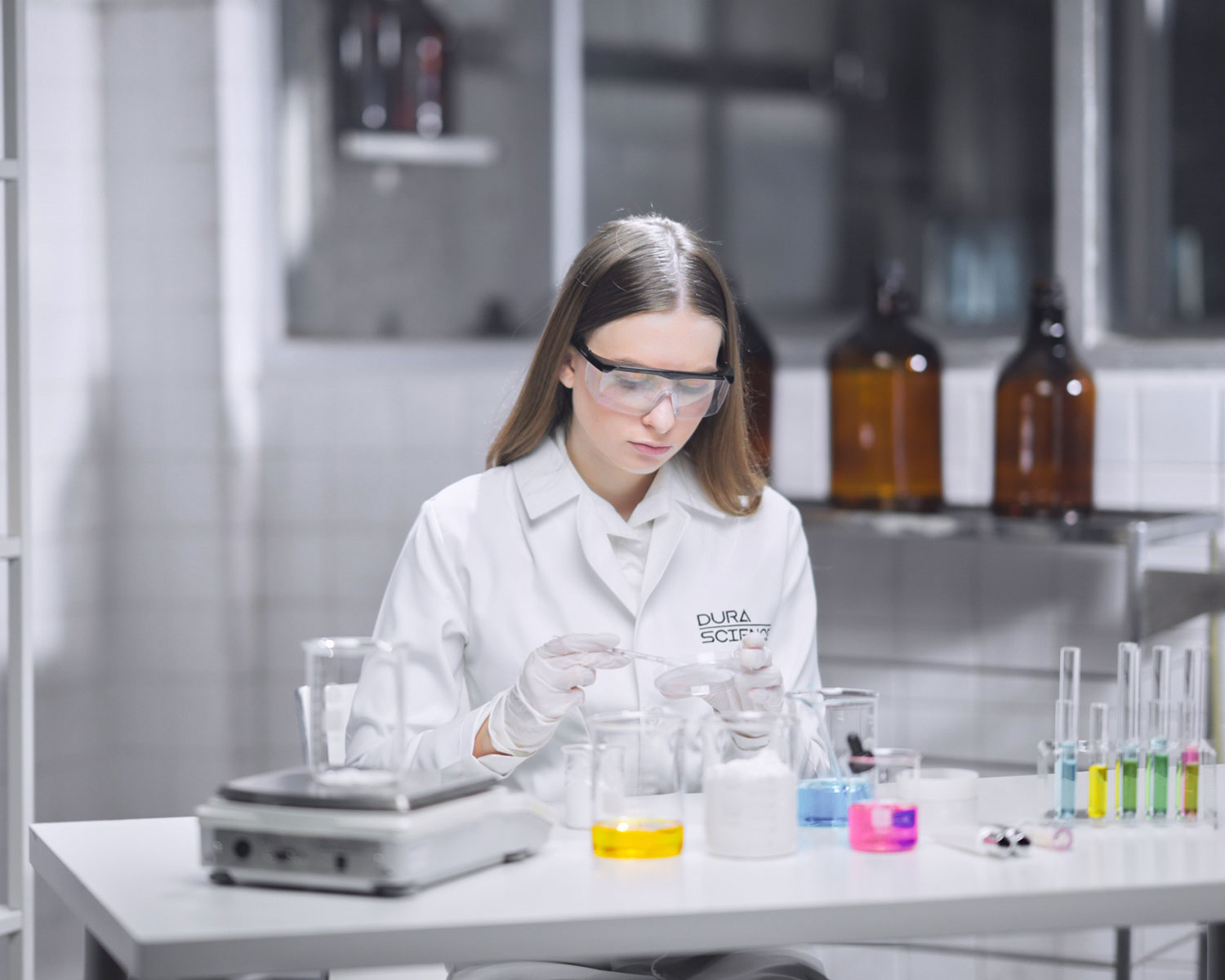
The human body comprises approximately 20,000 to 25,000 genes, responsible for protein production that forms cells, including skin cells and components like the extracellular matrix (ECM). Proper and consistent gene function facilitates healthy skin cell formation and new ECM generation. In adults, this process replenishes old skin cells and the skin cell layer every 3-4 weeks. Genetic dysfunction disrupts skin cell function and ECM production regulation, leading to anomalies in new cell formation replacing old ones. As genes are inherited from our ancestors, individuals with relatives with skin problems are more likely to face similar issues.

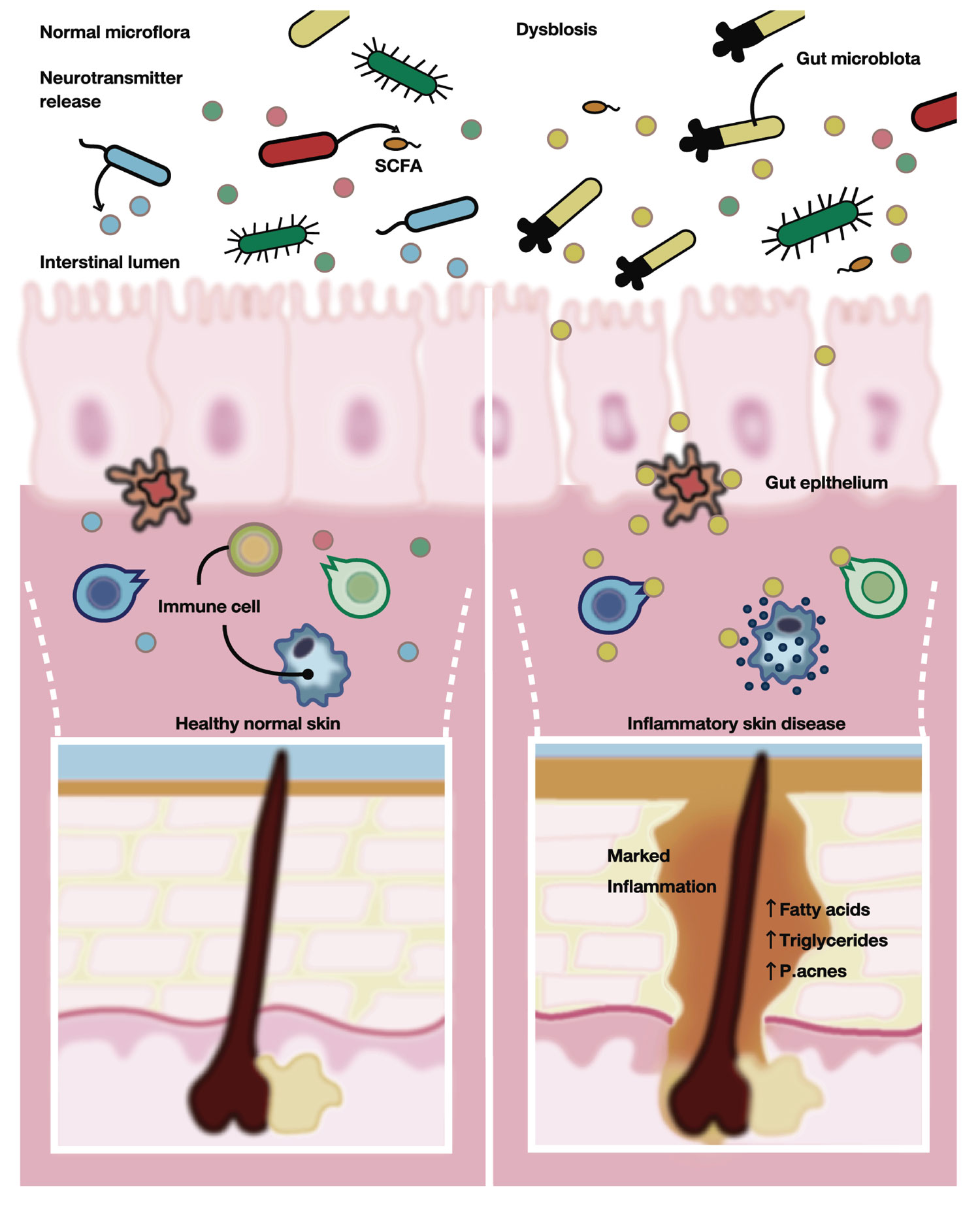
An adult’s digestive system houses up to 1,000 different types of gut microbiomes, primarily comprised of Firmicutes and Bacteroidetes. Factors such as diet, illness, antibiotics, and age influence gut bacterial balance. Skin conditions like rashes and acne breakouts are believed to be associated with gut dysbiosis
Good skin health is supported by a healthy, suitable, and balanced diet, beginning with the skin’s fundamental units: skin cells and extracellular matrix (ECM). The ECM comprises numerous proteins, but its primary components include proteins, hyaluronic acid, and collagen, considered the major constituents of ECM.
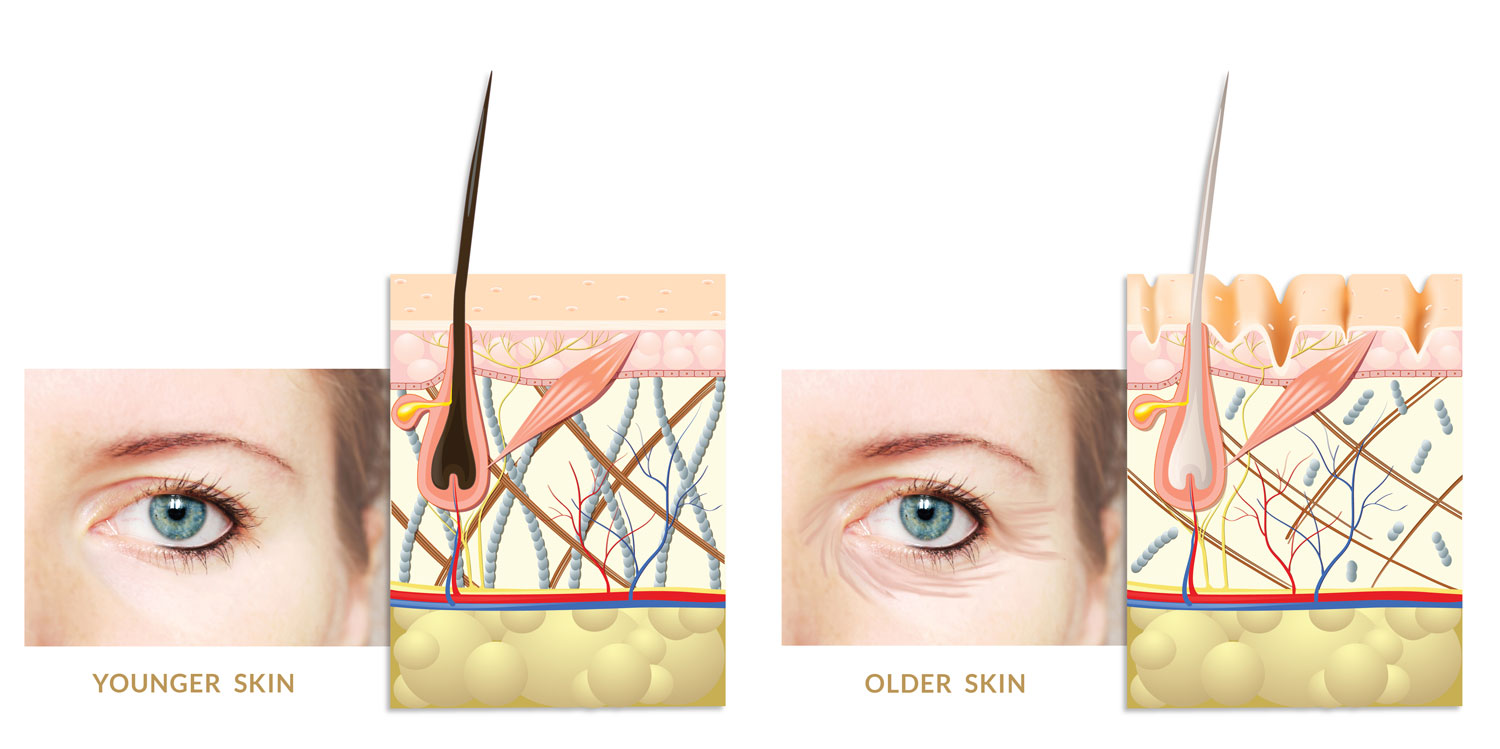

Optimal skin quality necessitates protection against antioxidants, which can damage skin cells and impair other skin components. Free radicals infiltrate our skin through internal factors, such as stress and chemicals from food consumption, as well as external sources like pollution and UV rays from sunlight.
These free radicals directly impact the integrity of skin cells and skin components, as well as skin cell regeneration, leading to the deterioration of the skin’s natural turnover cycle daily. Thus, implementing a comprehensive strategy that targets these four factors in the D.T.M™ component is crucial to promote radiant, clear, and healthy skin throughout one’s lifetime.
Melanin is a natural pigment responsible for the diverse skin tones observed among human populations. Produced by melanocytes in the basal cell layer of the epidermis, melanin also imparts color to human hair and eyes. Melanogenesis, the process of melanin production, is regulated by the tyrosinase enzyme. Melanocytes convert melanin pigments into melanosomes, organelles responsible for melanin storage and transport to keratinocytes in the skin’s outermost layer.
Melanin can be categorized into eumelanin (brown-black melanin) and pheomelanin (red-yellow melanin). Genetic factors and race determine melanin production, while the Melanocortin1 Receptor (MC1R) gene influences melanin levels, resulting in variations in skin undertones within the same race. Additionally, multiple genes, including SLC24A5, SLC45A2, and TYR, modulate tyrosinase enzyme activity, thus affecting skin tone.
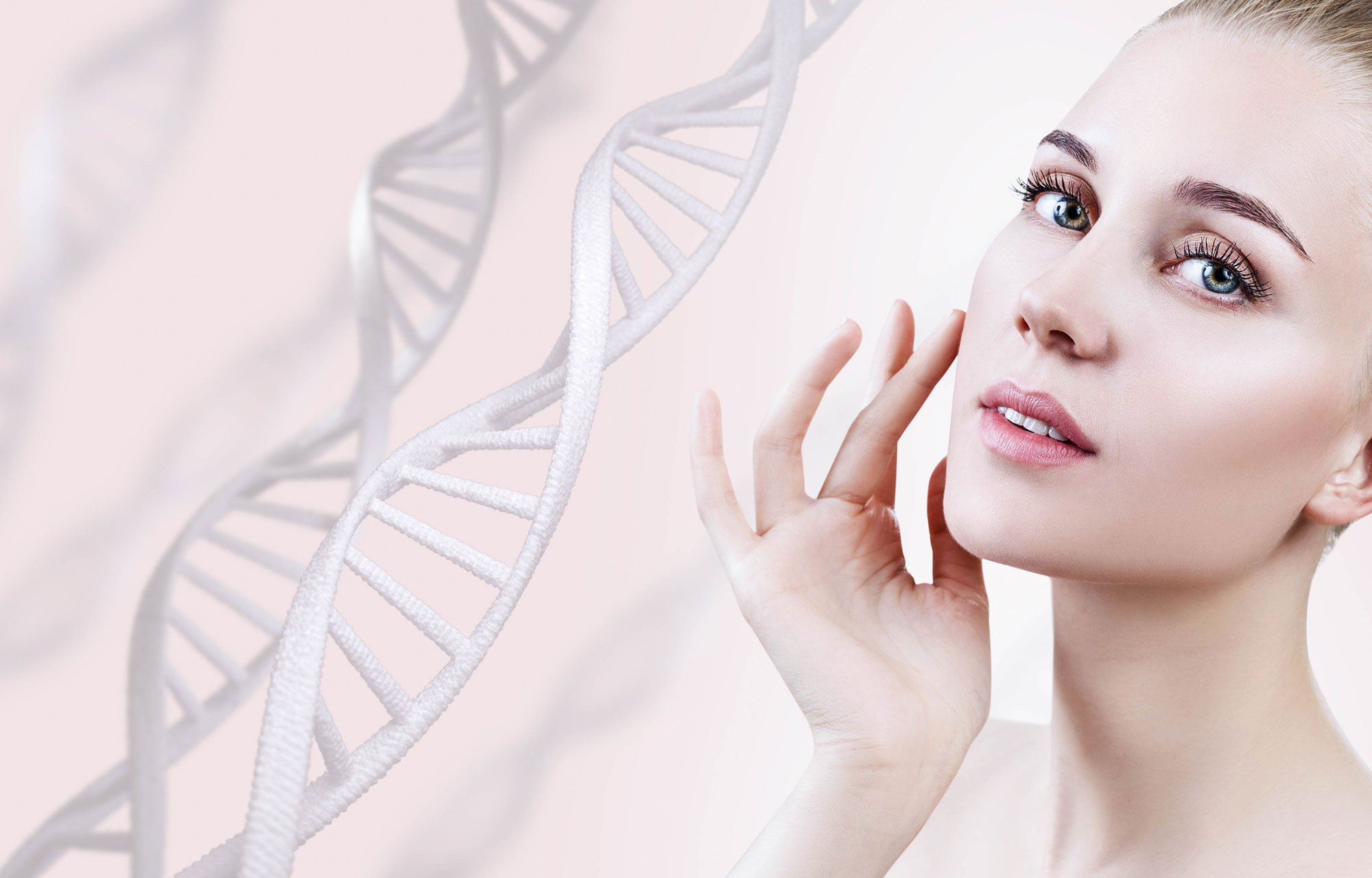
Extensive medical research has demonstrated that the human digestive system harbors approximately 1,000 distinct bacterial species. Firmicutes and Bacteroidetes constitute the majority of these microscopic denizens. Factors such as diet, illness, antibiotic medication, and age significantly impact gut bacterial composition. Recent studies have also unveiled a link between acne breakouts and gut dysbiosis, underscoring the importance of understanding the microbiome-gut-skin axis.
The Extracellular Matrix (ECM) functions as a shield against harmful chemicals and bacteria. Proper nutrition is indispensable for maintaining and repairing the ECM. Hyaluronic acid contributes to skin cell fortification and ameliorates visible signs of aging. Collagen, a critical component for skin elasticity, is a protein-based substance integral to the ECM. In children who consume adequate Vitamin C, hyaluronic acid and collagen are abundant, promoting fibroblast cell reproduction of collagen. Consequently, children’s skin exhibits a soft, smooth texture. In contrast, adult skin cells regenerate more slowly, and their efficiency diminishes with age as cellular functions degrade. Thus, supplying the body with essential nutrients, particularly collagen, becomes increasingly vital as individuals age.
Numerous studies have emphasized the advantages of antioxidants as protectors of skin health. Free radicals can compromise skin health and precipitate the premature aging of skin cells. This phenomenon is particularly prevalent among urban residents exposed to a wide array of free radicals daily. As a result, bolstering the antioxidants that serve as the skin’s defense is of paramount importance.
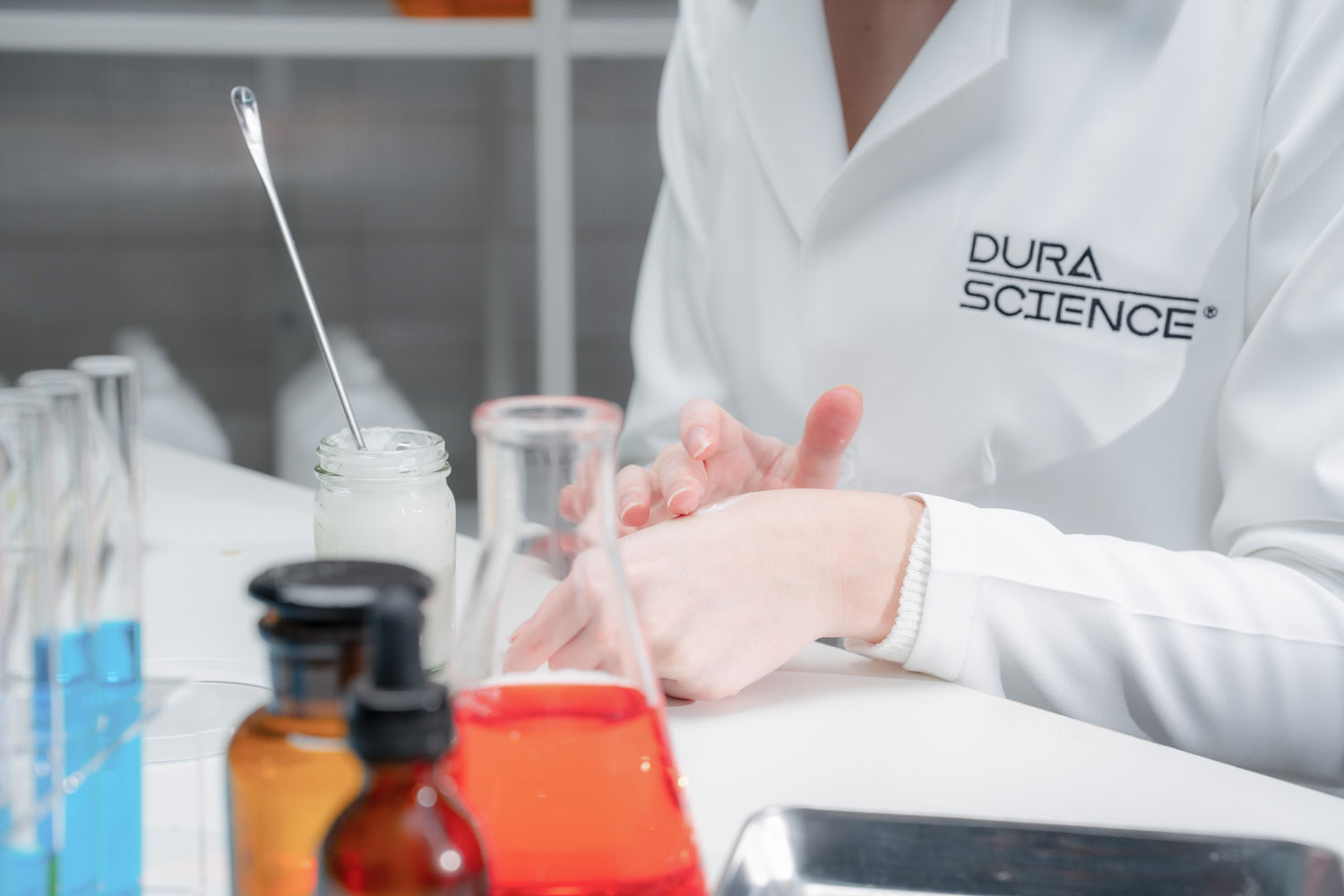
The Consequences of D.T.M™ Component Deficiency
Offspring inherit genetic traits from their parents and grandparents, encompassing aspects such as body shape, facial features, and skin tone. Consequently, the presence of dysfunctional genes in the parents may be transmitted to their children, potentially impacting the progeny’s skin health as they age, including factors such as skin tone, firmness, and deterioration.
The human gastrointestinal system houses various bacterial species that typically coexist symbiotically and contribute to the regulation of bodily functions. However, gut dysbiosis can lead to complications such as Small Intestinal Bacterial Overgrowth (SIBO), which disrupts gastrointestinal immunity and instigates inflammation prompted by harmful chemicals. These substances can circulate via the bloodstream, ultimately reaching skin cells and potentially inducing skin irritations like eczema, Atopic Dermatitis, and Acne Vulgaris.
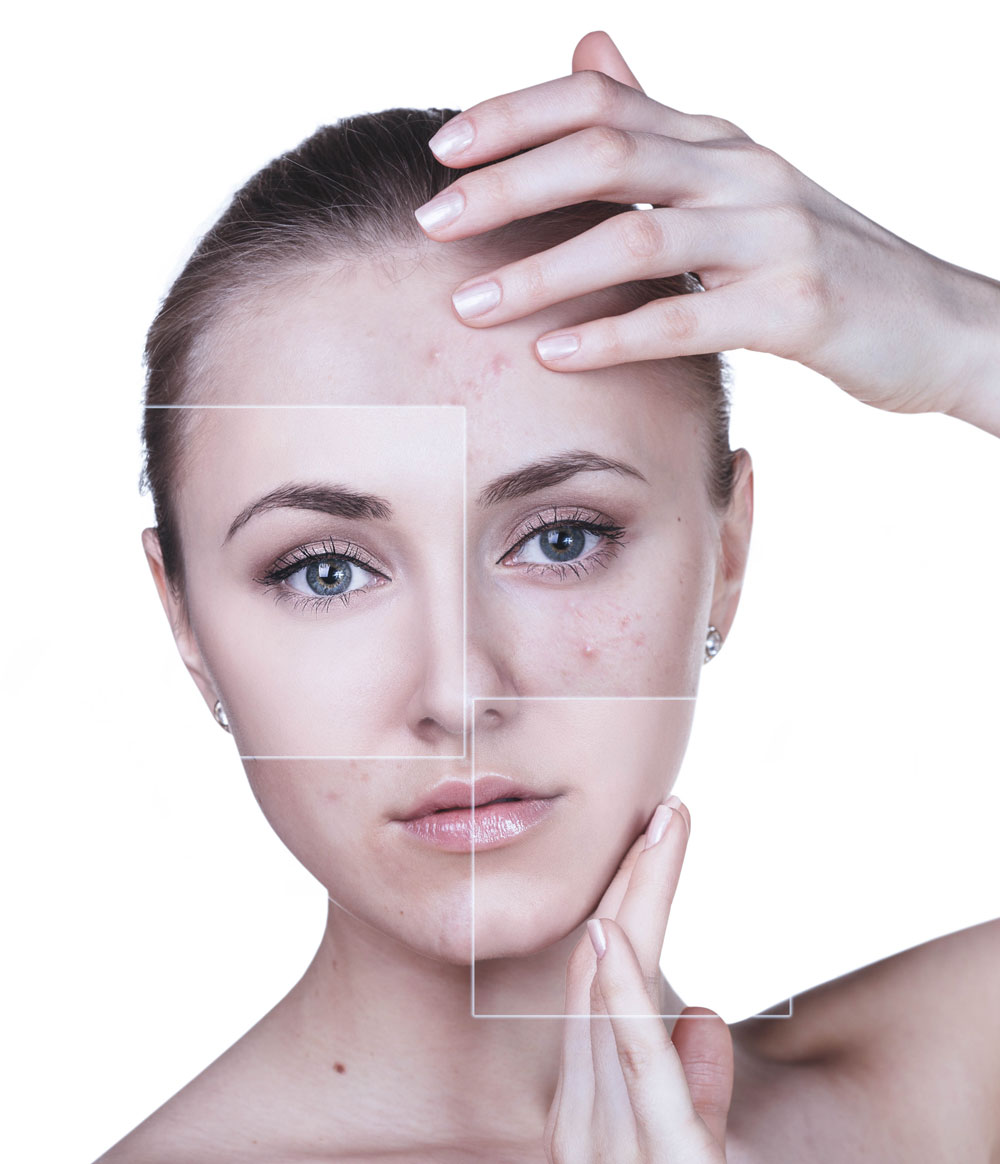
The Extracellular Matrix, comprising hyaluronic acid and collagen, is pivotal in maintaining robust and healthy skin. Scientific literature suggests that factors such as magnesium deficiency, protein deficiency, and smoking can negatively influence hyaluronic acid production while accelerating its degradation. As hyaluronic acid levels diminish, the ECM’s efficacy becomes compromised, potentially leading to subsequent issues.
Furthermore, research has established that zinc deficiency can contribute to collagen deficiency, an essential protein structure for skin strength. Coupled with a decrease in endogenous hyaluronic acid levels in the skin, this phenomenon can weaken the skin’s defenses, rendering it more susceptible to damage like dryness, chapping, rough texture, and eventually fine lines and deep wrinkles.
When the antioxidant system tasked with safeguarding the skin becomes compromised, harmful radicals can infiltrate and inflict cellular damage. As skin cells and the ECM approach collapse, the skin may display signs of premature aging, such as dryness, uneven texture, dark spots, or early wrinkles.
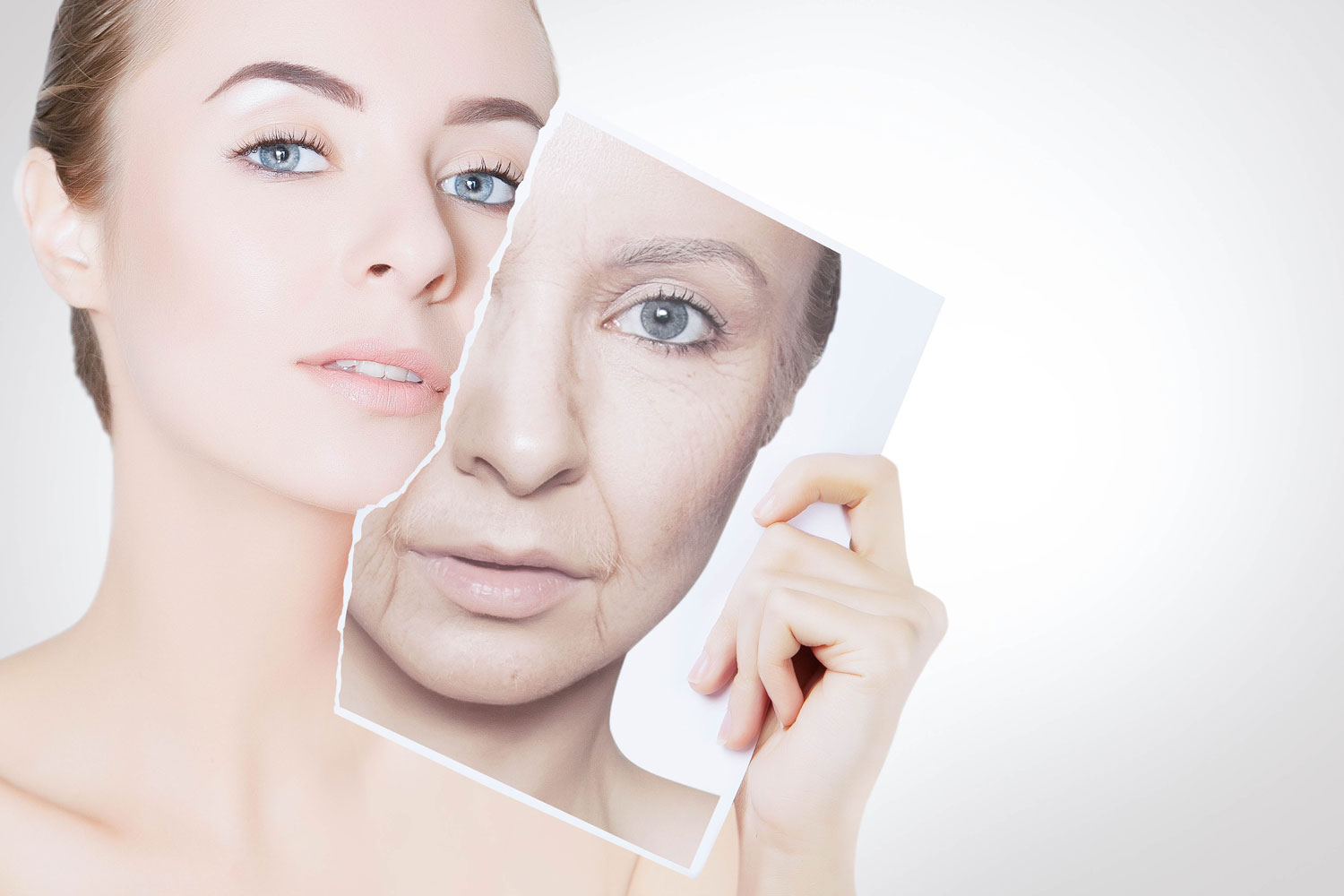
Enhancing Skin Health through Practical Interventions
To address dermatological concerns arising from genetic traits and heredity, it is essential to advance research efforts in these domains. Currently, the majority of investigations in this area remain in their nascent stages.
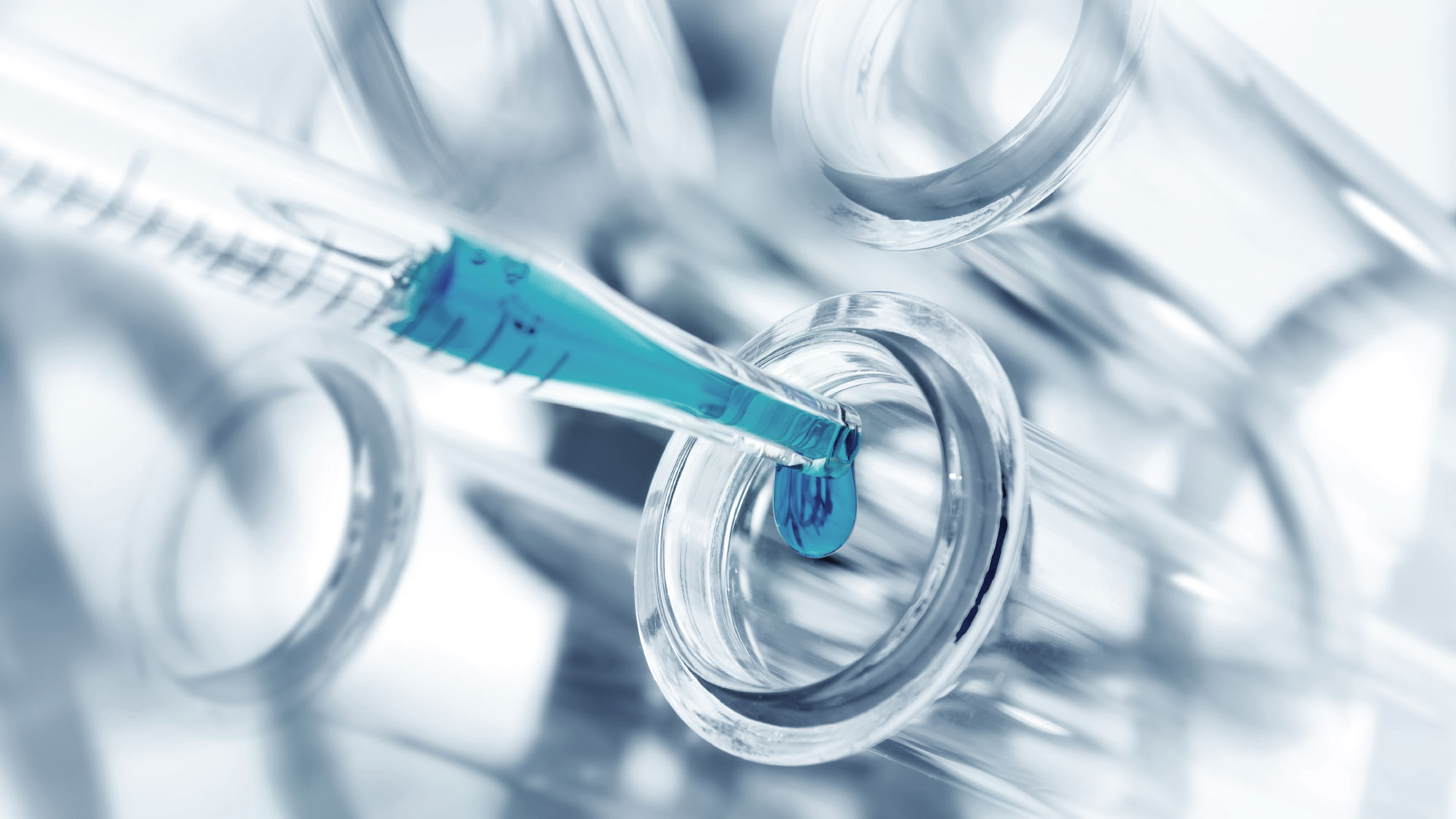
Prebiotics contribute to a balanced gut microbiome, functioning as nondigestible polysaccharides that support gut bacteria maintenance. Probiotics, distinct from probiotic supplements, are live bacteria that confer benefits to the digestive system and gut flora. These microorganisms serve as regulatory agents, fostering a conducive environment for healthy bacteria within the gastrointestinal tract. Research has indicated that individuals with acne experienced improvements following 12 weeks of probiotic consumption, signifying that a balanced gut flora can enhance gene expression and skin cell functionality.
Optimal health is rooted in proper nutrition, encompassing soy protein, vitamins for collagen production, hyaluronic acid, zinc, and magnesium. The intake of these nutrients fosters improved skin quality. Studies on hyaluronic acid and collagen have demonstrated that consistent supplementation can yield considerable enhancements in skin texture and cell quality.
Alongside skin-nourishing nutrients, the body necessitates protective agents against free radicals. Anti-free radical substances shield the body from chronic inflammation, cellular damage, and chromosomal harm. Antioxidant agents neutralize free radicals by transferring negative charges, thereby removing detrimental catalysts from cells and inhibiting oxidative stress reactions.
Under typical conditions, the body employs two mechanisms to eliminate free radicals:
- Utilizing free radical-binding enzymes, such as superoxide dismutase (SOD) enzymes and catalase glutathione peroxidase, produced endogenously. However, as individuals age or experience injuries, enzyme production declines, while free radical levels persist.
- Consuming nutrient-dense foods abundant in vitamins A, C, E, OMEGA-3, Zinc, Selenium, and Resveratrol, including green tea and grape seeds. Regular intake of antioxidant-rich foods aids in reducing free radicals that can adversely affect numerous systems, including the DNA of skin cells.
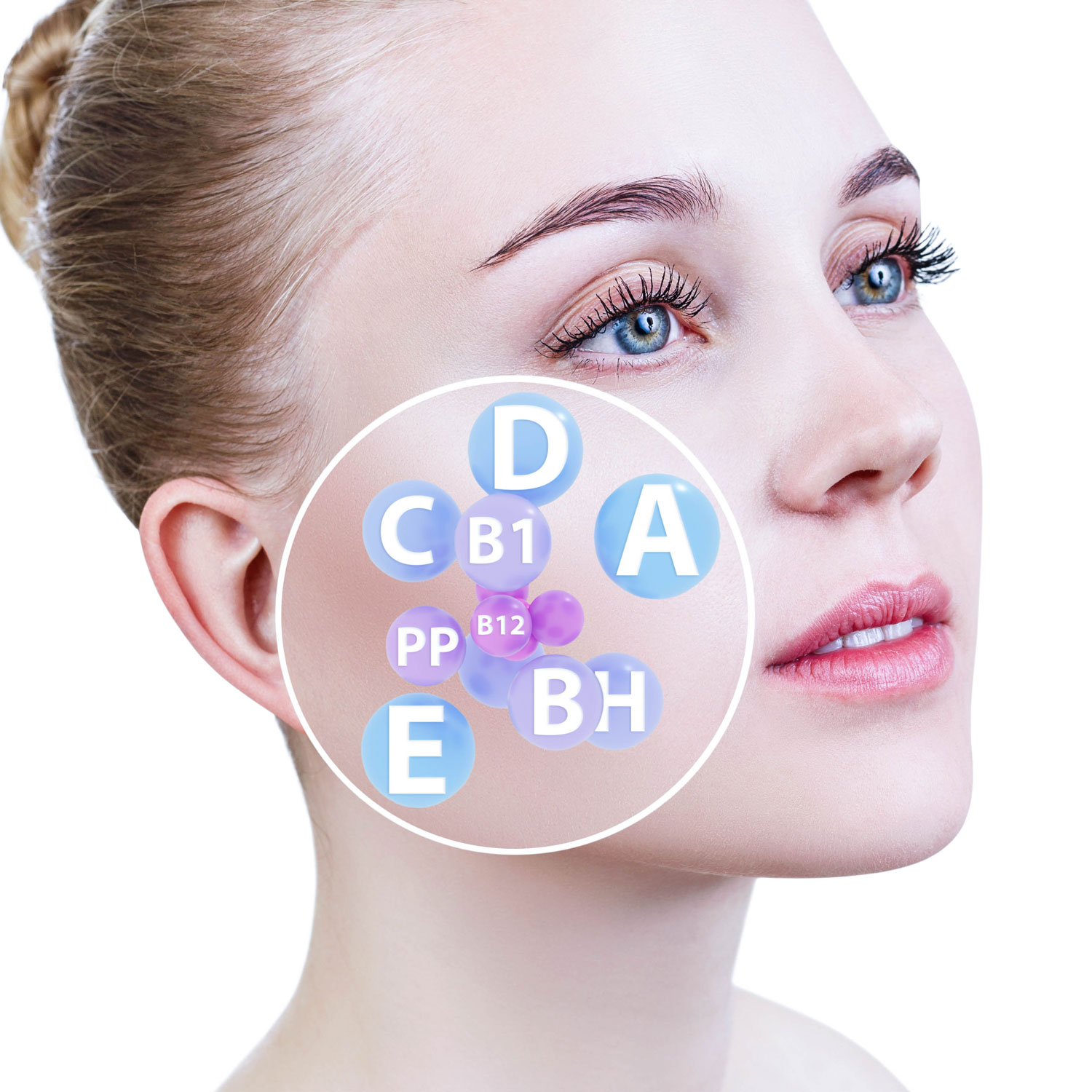
As the aging process progresses, the body’s efficiency declines, and gut bacteria may not operate optimally. Consequently, skin cell and extracellular matrix (ECM) deterioration, diminished collagen levels, and increased exposure to free radicals may occur, exacerbating skin conditions across all age groups.
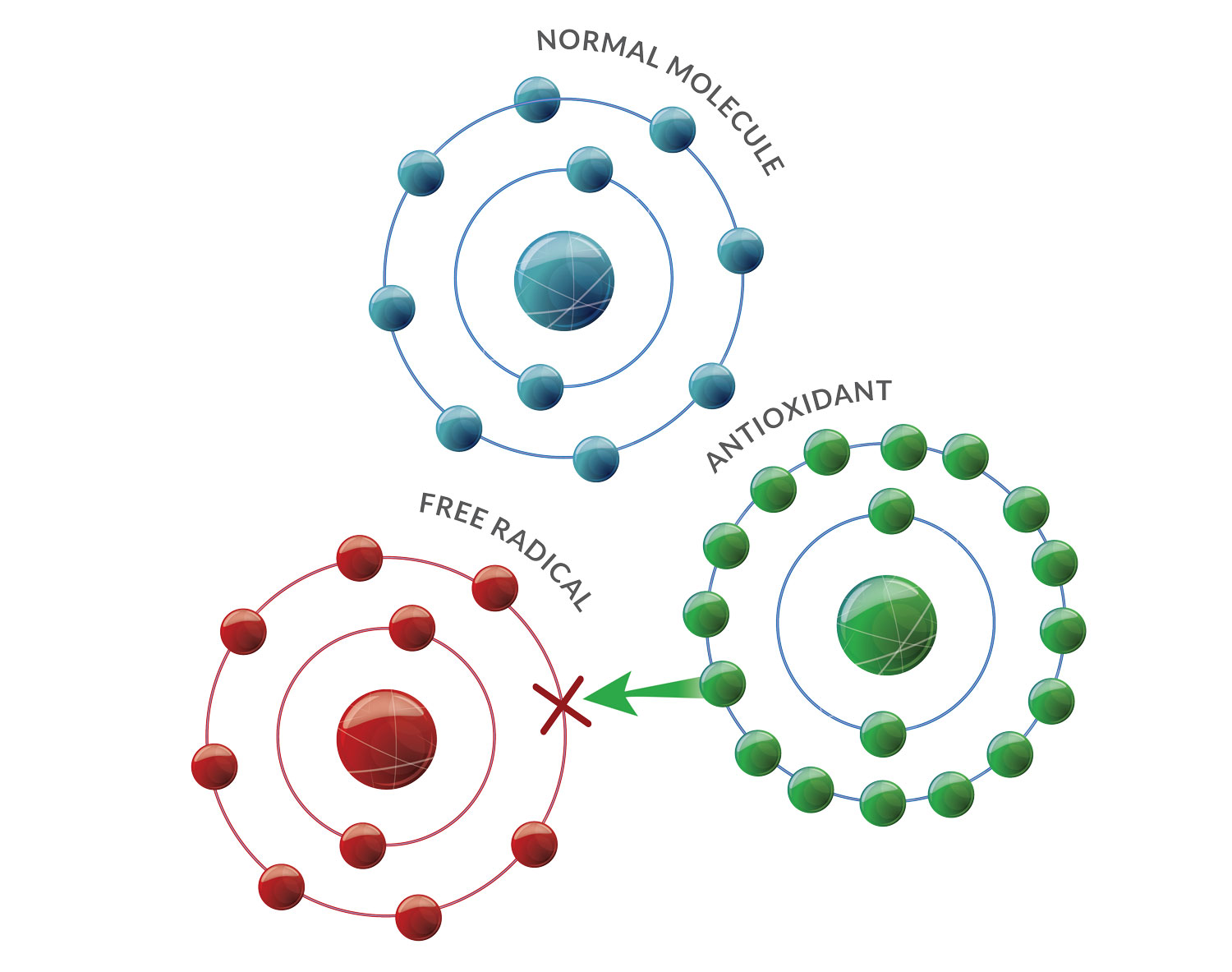
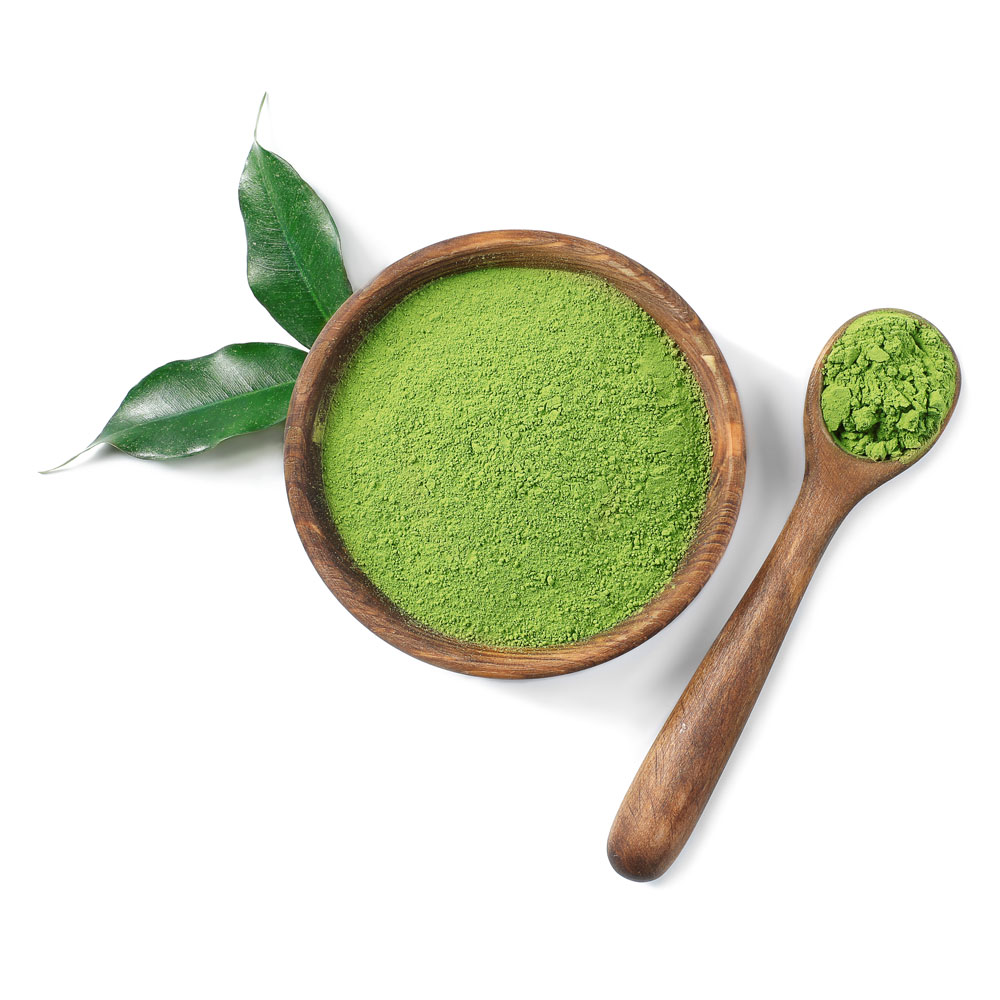



Durascience™ has pioneered the development of the D.T.M™ (Derma Transcendence Matrixes) to bolster skin health and promote a more youthful appearance, ensuring that our skin remains a cherished asset throughout our lives.
